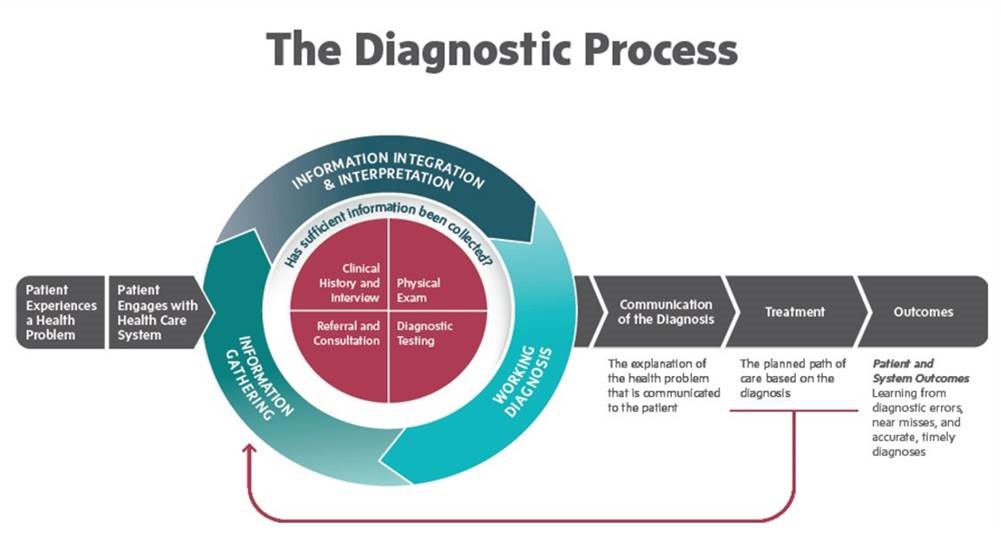What is Diagnostic Excellence?
The National Academy of Medicine defines diagnostic error as the failure to (a) establish an accurate and timely explanation of the patient’s health problem(s) or (b) communicate that explanation to the patient. Simply put, these are diagnoses that are delayed, wrong or missed altogether.
The effects of diagnostic errors are currently estimated to affect upwards of 12 million Americans each year. Diagnostic errors cause more harm to patients than all other hospital errors combined. Analysis reveals that accurate and timely diagnosis depends nearly as much on the health care system as it does on the diagnosticians (providers) themselves.
Diagnostic errors also have a marked impact on health care providers, and the emotional effects of diagnostic error can be long-lasting and harmful. Patients identify the ramifications of diagnostic errors as emotional distress, prolonged illness and medical complications, impairment in activities of daily living, and decreased confidence in the health care system.
Given the prevalence and impacts of diagnostic errors, health care leaders must address them as part of their quality improvement and patient safety programs.
While there is no single cause of diagnostic error and therefore no single solution to the problem, this complex issue must be solved through systems improvement. In patient safety literature, several causes of diagnostic error were identified, including:
- Errors in clinical assessment and subsequent decision making
- Lack of time with the clinician
- Communication between clinicians and patients
- Communication between clinicians
- System failure

Toolkits and Resources
Safer Diagnosis Checklist: 10 High-Priority Practices for Diagnostic Excellence
Diagnostic Safety and Quality | Agency for Healthcare Research and Quality (ahrq.gov)
Improving Diagnosis in Health Care | The National Academies Press (nap.edu)
Recordings
Getting the Right Diagnosis at the Right Time
The Role of Electronic Surveillance
Achieving Diagnostic Excellence: Patients as Research Partners


